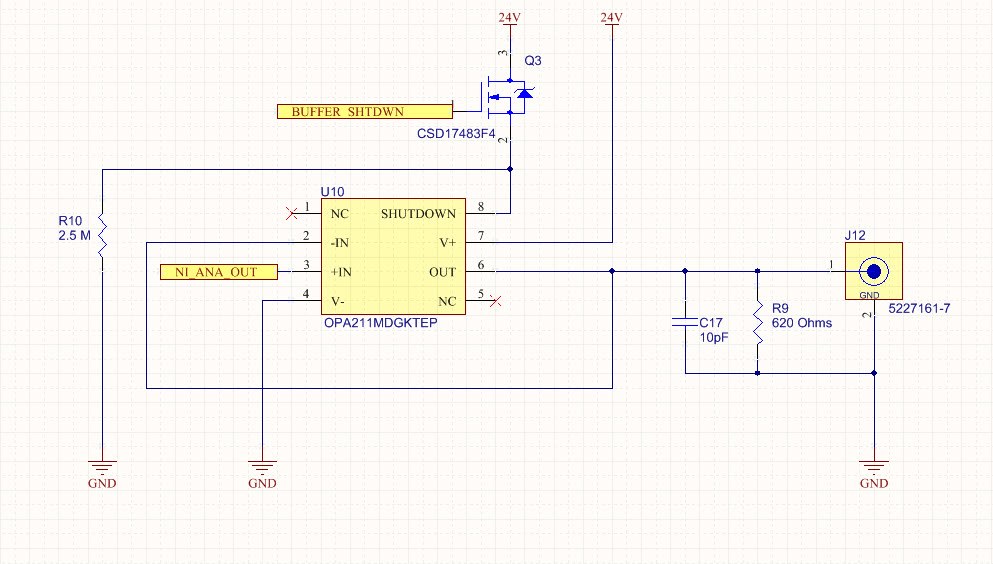Hi,
I am trying to get the OPA211MDGKTEP amp to work as a unity gain buffer with the Shutdown signal as an enable. The application is pretty simple, I run my signal (1kHz 1Vpp 1.5V offset sine wave) into the + of the op amp with the output tied to the - and a R load and C load of 620 Ohms and 10 pF, respectively. The rails are tied to 24V and 0V. The shutdown Pin was attached to a pulldown resistor and the source of a transistor but that transistor proved to not be biased properly so it was taken off entirely.
The shutdown pin seems to output a voltage from the chip at around 19.5V if measured while floating. Attaching 24V to the shutdown pin does not cause the output to turn off. Just to try, we tried to attach 30V to the shutdown pin to see what would happen, and the power supply output hit the set current maximum of 200mA and dropped 26V. I would have imagined this pin to be high impedance so we thought this was strange. Pulling the pin to ground also does nothing, as expected.
The component markings show "1125 OBCM". I have confirmed the footprint, connections, and orientation of the component. We are trying it on a PCB so though we have tried this across multiple components, their implementation is identical.
We figure something is wrong here because this seems like it should be an easy implementation. If anyone could help us shed some light on the problem, let us know.



